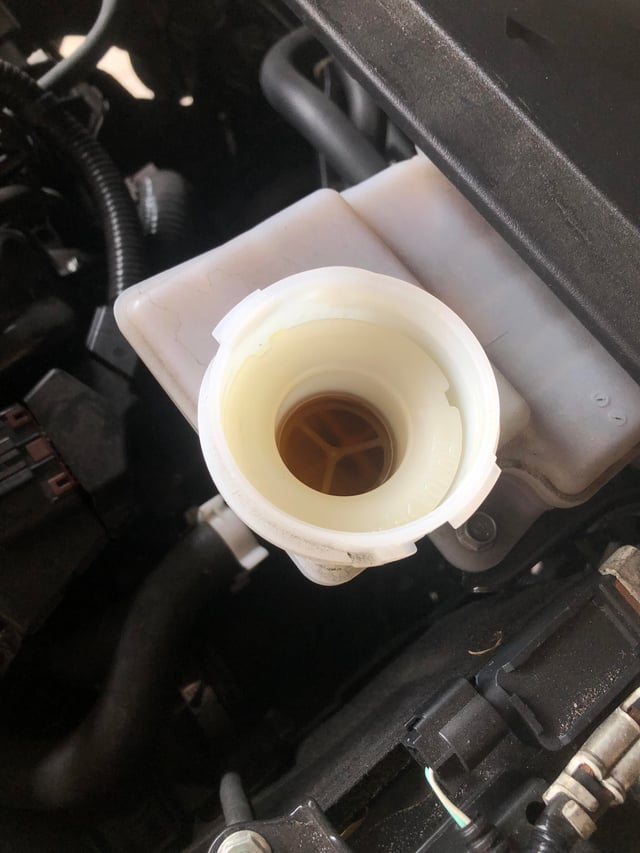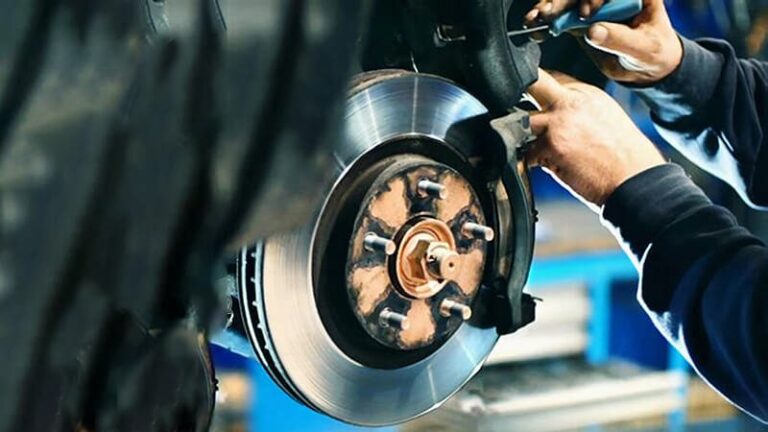Have you ever wondered if every car on the road has an emergency brake? You might think it’s standard, but the truth could surprise you.
Knowing whether your car has this vital safety feature can make a big difference in how you handle unexpected stops or steep hills. You’ll discover the facts about emergency brakes, why they matter, and what to look for in your own vehicle.
Keep reading—you might just learn something that could keep you safer behind the wheel.

Credit: www.torque.com.sg
Purpose Of An Emergency Brake
The emergency brake is a vital part of every car. It helps keep the vehicle from moving when parked. It also acts as a backup braking system in case the main brakes fail. Understanding its purpose helps drivers use it correctly and stay safe on the road.
Safety Functions
The emergency brake holds the car still on hills or slopes. It stops the car from rolling when parked. This brake works separately from the main brakes. It can stop the car if the main brakes stop working. This makes it an important safety tool in emergencies.
When To Use It
Use the emergency brake when parking on a slope. It keeps the car from moving unexpectedly. It also helps during sudden brake failure. Pull the emergency brake slowly to avoid skidding. Use it gently to stop the car safely in emergencies.

Credit: www.reddit.com
Types Of Emergency Brakes
Emergency brakes are important safety features in cars. They help keep the vehicle stopped when parking or in an emergency. Different cars have different types of emergency brakes. Understanding these types helps you know how to use them properly.
Handbrake Lever
The handbrake lever is the most common type of emergency brake. It sits between the front seats. You pull it up to activate the brake. This locks the rear wheels to keep the car still. It is easy to use and very reliable.
Foot Pedal Brake
The foot pedal brake is found in some older cars. It is a small pedal located on the far left side. You press it down with your foot to engage the brake. It works like the handbrake but uses your foot instead of your hand. This type frees up space between the seats.
Electronic Parking Brake
Newer cars may have an electronic parking brake. It uses a button or switch instead of a lever or pedal. When pressed, the system activates the brake automatically. This type is simple and requires less effort. It often has extra features like automatic release when driving.
Presence In Different Vehicles
Emergency brakes are an important safety feature in many vehicles. They help stop the car quickly in case of main brake failure. Different types of vehicles have different designs and uses for emergency brakes. Understanding their presence in various vehicles helps drivers know what to expect.
Some vehicles use traditional handbrakes, while others have electronic systems. The type and location of the emergency brake can change depending on the vehicle’s purpose and design.
Passenger Cars
Most passenger cars have an emergency brake. It often appears as a hand lever or a foot pedal. The brake helps secure the car when parked on hills or slopes. Newer cars may use electronic parking brakes controlled by a button. These brakes still serve the same purpose but use modern technology.
Commercial Vehicles
Commercial vehicles like trucks and buses also have emergency brakes. These brakes are usually stronger due to the vehicle’s size and weight. Many use air brakes with a parking brake function. This system prevents the vehicle from rolling when parked. Drivers rely on these brakes for safety during stops and loading.
Electric And Hybrid Models
Electric and hybrid cars include emergency brakes too. Many models feature electronic parking brakes. These brakes activate automatically when the car stops. They help save battery power and improve safety. The design fits with the electric drive systems. Drivers find these brakes easy to use and reliable.
Legal Requirements For Emergency Brakes
Emergency brakes play a vital role in vehicle safety. Laws require these brakes to help prevent accidents. Different places have different rules on emergency brakes. These rules ensure cars have a backup stopping method. Without these laws, many vehicles might lack this important safety feature.
Regulations By Region
Many countries demand all cars have an emergency brake. In the United States, federal law sets clear standards. The brake must hold the car on slopes and during failures. Europe has similar rules but with slight variations. Some regions require testing and certification for these brakes. Rules vary but focus on safety and reliability.
Impact On Vehicle Design
Legal rules shape how manufacturers build emergency brakes. Car makers must design brakes to meet safety laws. This affects brake type, placement, and strength. Some cars use hand-operated levers, others use foot pedals. Laws also influence materials and testing methods. These designs aim to provide easy use and strong hold.
Common Misconceptions
Many people have wrong ideas about emergency brakes in cars. Some think all cars have them the same way. Others believe emergency brakes work just like regular brakes. These ideas cause confusion about how to use them safely.
Emergency Brake Vs. Regular Brake
Emergency brakes and regular brakes are not the same. Regular brakes stop the car using the main braking system. Emergency brakes use a separate system, usually cables. They work on the rear wheels only. Regular brakes respond fast and with more power. Emergency brakes are slower and less strong.
Effectiveness In Emergencies
Emergency brakes help only in certain situations. They can stop the car if the regular brakes fail. But they do not work well at high speeds. Pulling the emergency brake too hard can cause the car to skid. Drivers should use it carefully and only when needed. Emergency brakes are a backup, not the main stop method.
Maintenance And Safety Tips
Maintaining the emergency brake is essential for your car’s safety. Regular care helps avoid brake failure and keeps you safe on the road. Knowing how to use the emergency brake correctly also prevents damage and ensures it works when needed.
Regular Checks
Check the emergency brake regularly for wear and tear. Look for loose cables or unusual noises. Test the brake by pulling it gently; it should hold the car firmly. If it feels weak or slips, get it fixed quickly. Regular inspections prevent costly repairs later.
Proper Usage
Use the emergency brake every time you park, especially on slopes. Avoid using it while driving fast, as this can cause damage. Pull the brake smoothly and firmly to engage it properly. Release it fully before moving to prevent brake drag. Proper use extends the brake’s life and keeps you safe.

Credit: www.motorpoint.co.uk
Frequently Asked Questions
Do All Cars Come With An Emergency Brake?
Most cars have an emergency brake, also called a parking brake. It helps keep the car stationary when parked. Some electric or modern vehicles might use electronic parking brakes instead of traditional ones.
How Does An Emergency Brake Work In Cars?
The emergency brake usually operates mechanically via a cable. It locks the rear wheels to prevent the car from rolling. This brake is separate from the main hydraulic braking system, providing backup safety.
Can You Drive A Car Without Using The Emergency Brake?
Yes, you can drive without using the emergency brake, but it is unsafe to park without it. The emergency brake prevents cars from rolling on slopes, ensuring stability when parked.
Are Emergency Brakes Required By Law In All Cars?
In many regions, cars must have an emergency or parking brake by law. This is a safety requirement to prevent accidents caused by rolling vehicles when parked.
Conclusion
Not all cars have the same type of emergency brake. Some use hand levers, others have foot pedals or electronic buttons. This brake helps keep your car from moving when parked. Knowing how your emergency brake works is important for safety.
Always check your car’s manual to understand its features. Using the emergency brake can prevent accidents on slopes or during parking. Stay safe by learning and using your car’s emergency brake properly. It’s a small step that makes a big difference.



